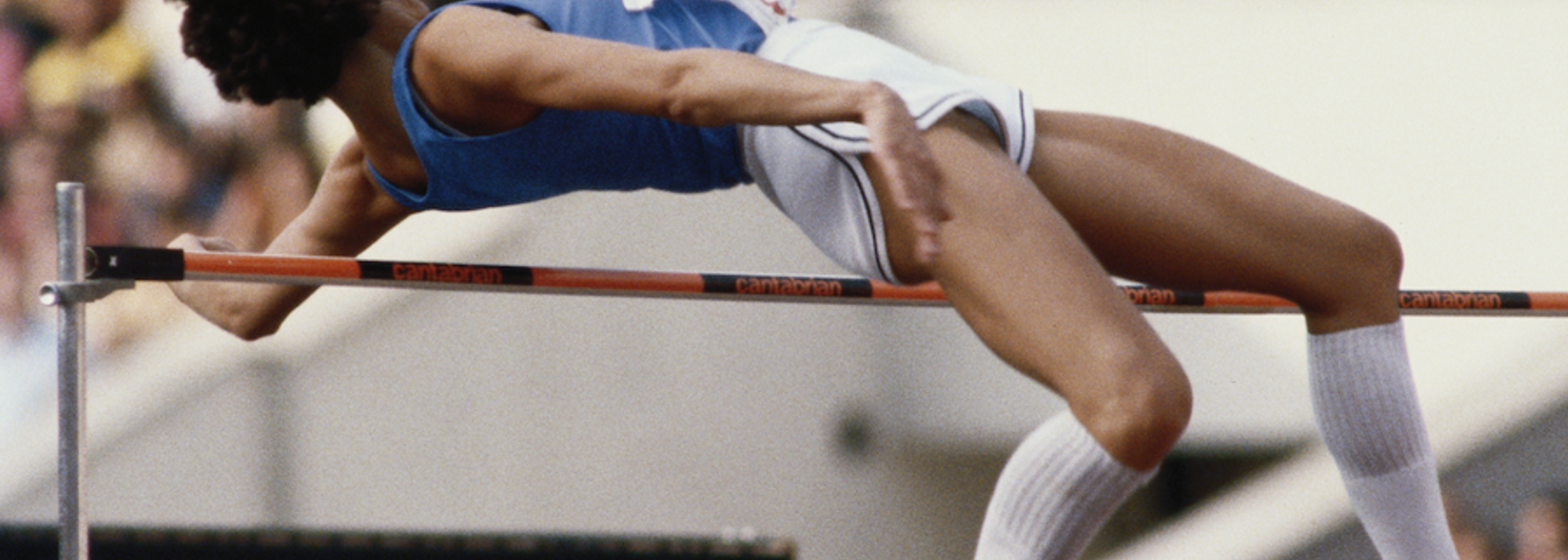Sara Simeoni
Today's Rome Diamond League meet features a high class women’s high jump field in a nod to Sara Simeoni, one of Italy’s finest female athletes. We’ve picked out some of the Olympic champion and former world record holder’s most defining moments.
Brescia, 1978 (and Prague)
After standing unchallenged for a full ten years, the women’s high jump world record was broken or matched 12 times by five different athletes between 1971 and 1978.
At the start of 1978, Sara Simeoni’s PB stood at 1.91m, which she set winning Olympic silver in Montreal (her first major international medal).
The popular Italian smashed that by an incredible 10cm at in front of a home crowd in Brescia in early August 1978 to set a new world record. Weeks later at the Prague 1978 European Championships, she cleared the 2.01m height again, only for previous world record holder, Olympic champ and straddle jump devotee Rosemarie Ackermann to match it.
However in one of the most unsatisfactory outcomes in track and field history, Ackermann’s (understandably) wild celebrations caused the bar to fall off and the jump counted as a fail.
It meant Simeoni – who had switched to high jump at the age of 12 after she was told she wouldn’t make it as a ballet dancer because her feet were too big – bagged the European crown and kept her precious world record. Her mark of 2.01m would stand unsurpassed for the next four years and remain an Italian national record until 2007, when it was broken by double world champs medallist Antonietta Di Martino.
Moscow, 1980
As the world record holder and having taken the scalp of Ackermann – gold medal winner in Montreal 1976 – in Prague two years earlier, Simeoni was favourite to win gold going into the Moscow Olympics.
There was a strong field that included 1979 European indoor champ Andrea Mátay; double Olympic medallist Yordanka Blagoeva; Tamara Bykova, who would go on to win at the inaugural 1983 World Championships; and Simeoni’s old adversary Rosemarie Ackermann.
None of the histrionics that were witnessed in Prague featured in the competition this time round. The field gradually wilted as the bar went up until Simeoni was the only competitor left standing. She won gold with an Olympic record leap of 1.97m, confirming the Italian as the best female high jumper on the planet.
Los Angeles, 1984
By the time the next Olympics swung round Simeoni was no longer the world record holder; her best mark had been broken by three different women – Ulrike Meyfarth, Tamara Bykova, and Lyudmila Andonova – and now stood at 2.07m.
Simeoni had also lost the European outdoor and indoor crowns that she held going into Moscow four years earlier, and had failed to make it out of her qualifying group at the inaugural IAAF World Championships a year earlier.
She was far from the force that she used to be; yet Simeoni remained a fierce competitor and had plenty of Olympic experience to call on.
She qualified for the final in Los Angeles with a 1.90m. As the final progressed more and more of her competitors dropped out of medal contention. With the bar set at two metres – a height never before cleared in Olympic competition – Simeoni sailed over at the first attempt, with her signature graceful style that had the crowd swooning. Ulrike Meyfarth then scraped over to make it a straight jump off between the pair. Meyfarth confidently cleared 2.02m and Simeoni could not respond.
Regardless, it was an astonishing silver medal for the 31-year-old; only one woman since (Stefka Kostadinova, gold in 1996) has won an Olympic medal at an older age.




